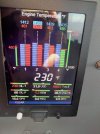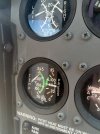Kenny Taylor
Pre-takeoff checklist
I flew a local C172SP rental this weekend and noticed it developed a tendency to overheat. I've flown this plane many times over the last 18 months, and it's never overheated previously despite hot summer days and constant Vy climbs.
The attached pics were taken climbing out of 4,000 feet on the coast. We were climbing 500 fpm, a bit rich of peak, around 90 KIAS, with an OAT of 78-80 F, and about 250 lbs below gross weight. After seeing the indication, we leveled out and allowed it to cool until CHTs were all in the green and oil temp was between 210-215. We had to keep the climb rate below 300 fpm to keep it out of the red after that.
I brought it up with the plane's owner, who seemed to disregard it as "way low" oil. We measured 6 qts at takeoff. It seems there are a lot of opinions on what "full" is, but 6 qts is not terribly low, and something else had to be going on.
I can't remember where "normal" was previously, other than being nowhere near redline. What does normal oil temp and CHT look like on the C172SP?
The attached pics were taken climbing out of 4,000 feet on the coast. We were climbing 500 fpm, a bit rich of peak, around 90 KIAS, with an OAT of 78-80 F, and about 250 lbs below gross weight. After seeing the indication, we leveled out and allowed it to cool until CHTs were all in the green and oil temp was between 210-215. We had to keep the climb rate below 300 fpm to keep it out of the red after that.
I brought it up with the plane's owner, who seemed to disregard it as "way low" oil. We measured 6 qts at takeoff. It seems there are a lot of opinions on what "full" is, but 6 qts is not terribly low, and something else had to be going on.
I can't remember where "normal" was previously, other than being nowhere near redline. What does normal oil temp and CHT look like on the C172SP?




